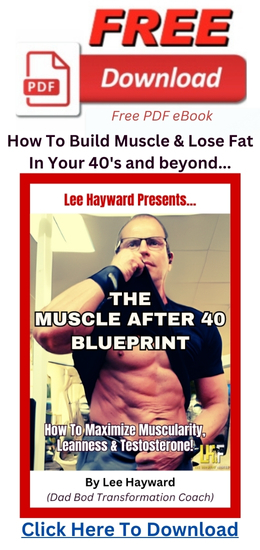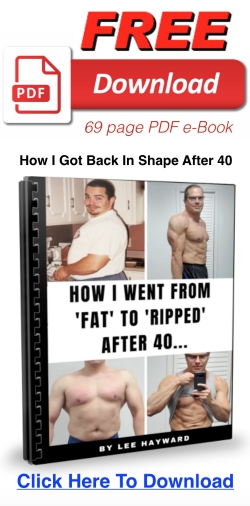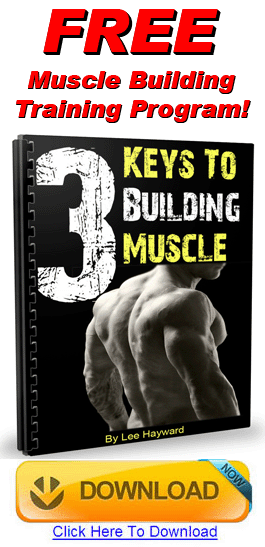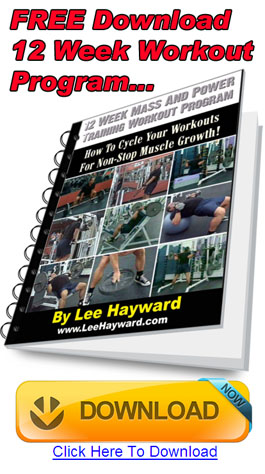When your goal is to pack and muscular mass and fill out your t-shirt with slabs of thick meaty chest muscle, then you need to train your pecs from top to bottom…
Incline, Flat, Decline, Presses and Flys. You can’t leave anything out if you want to build a pair of big muscular “man jugs”.
So If You Want To Build Big Muscular Pecs,
Try This Chest Workout…
Click PLAY To See The Full Workout:
Note: if you can’t watch the embedded video clip above,
you can watch it right on my YouTube Channel by Clicking Here
=========================
In this chest workout you’re going to get a complete program that will pump up your chest for rapid results.
Here’s the full chest workout…
Incline Bench Dumbbell Press – 3 sets of 10-12 reps
Flat Bench Dumbbell Fly – 3 sets of 10-12 reps
Pec Deck Fly – 3 sets of 10-12 reps
super set with
Reverse Pec Deck Fly – 3 sets of 10-12 reps
Decline Bench Press – 3 sets of 15+ reps
Starting From The Top!
The incline db bench press is a great more for filling out the upper chest muscles. This area tends to lag behind for most guys. It’s also the weakest angle to train your chest, so that’s why we’re doing it first.
Stretch And Grow!
After that we’re doing to stretch out the pecs with the dumbbell fly. This move is an isolation exercise that will work the chest in the fully stretched position. Be-careful to not lift too heavy in this move, you’ll get better results and reduce your risk of injury if you use light to moderate weights and focus on lifting with slow and controlled form.
Squeeze Those Pecs!
The next exercise is the pec deck fly. Now even though the pec deck fly may look like a similar movement to the dumbbell fly, it feels totally different. With dumbbells most of the tension is in the bottom range of motion when your chest is stretched. But with pec deck flys most of the tension is on the chest at the top when you bring your hands together. The pec deck provides a good peak contraction to really target the inner chest. Use strict form and really squeeze your chest hard for a second at the top of each rep.
Bonus Exercise!
When you train chest, you also place a lot of stress on the shoulders, specifically the front delts. So to help keep your shoulders in balance and proportion, it’s a good idea to add in some rear delt work with your chest workouts. One of my personal favorites is to do the reverse pec deck fly which isolates the rear delts and upper back. You can super set the pec deck and reverse pec deck set for set.
Save The Biggest For Last!
The final exercise in our chest workout is the decline bench press. This move is a big basic compound lift that will allow you to handle a lot of weight. Now most guys will do this at the beginning of their chest workout when they are strongest. But you can get a killer pump in the pecs if you save it for the end of your chest workout after your pecs are pre-exhausted from all your other chest exercises. For this one do higher reps and really pump those pecs for all your worth.
There you go, a complete pec pumping chest building workout program that will help you fill out that t-shirt with slabs of thick dense chest meat.
Give it a go for yourself and then leave me a comment below letting me know how it works for you!







3 Comments
David Rabinowitz
Hey thanks so much for the advice. I had always been told and believed that decline bench was irrelevant in building muscle. Now that I know to always end my chest workout with the decline bench I will make sure to add that to my regime. I also will take your advice on doing sets of 15. I usually do a bit less but I will try that out.
David Rabinowitz
Freeman School Student
Benamar abdelhadi
Hi Mr leehayward
Thanks very much for the tips. I weigh 125kg for a height of 180cm. I have problems with belly fat. My pecs do not develop well, the other muscles respond well to powerlifting rather than multiple reps exercise. I have been injured last year at the level of my left front Delta. The bigger muscles in my body are dorsals and triceps.
Looking forward to hearing from you soon
Best
leehayward
One of the keys to preventing shoulder injuries (and rehabbing old injuries) is to ensure that you develop all 3 heads of the deltoids in balance. I’ve got a video that explains this in more detail at: